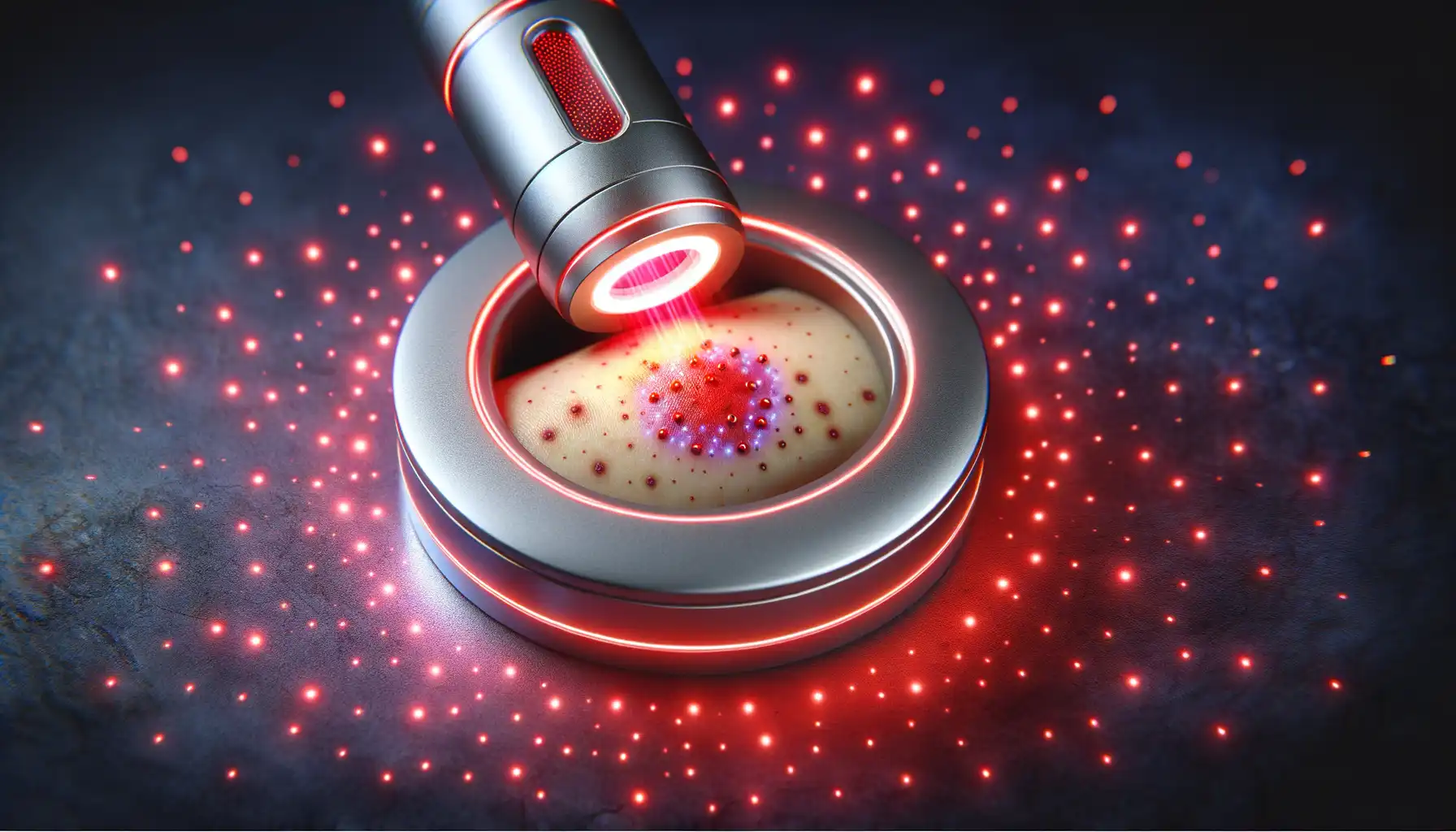Have you ever wondered if there’s a way to get that post-workout glow without the intense workout? Many people are turning to a relaxing, warming therapy that promises just that and more. Using an infrared sauna for skin health is a growing trend, and for good reason. Unlike the steamy, high-heat saunas you might be used to, infrared saunas use light to create heat, warming your body directly for a deeper, more gentle experience.
This isn't just about feeling good; it's about harnessing specific biological processes to improve your skin from within. From stimulating collagen to flushing out toxins, the benefits are compelling. Let's dive into how this soothing therapy can become your new secret weapon for radiant, resilient skin.
What is an Infrared Sauna and How Does It Work?
Before we get into the skin benefits, it helps to understand what makes an infrared sauna different from a traditional one.
A traditional Finnish sauna heats the air around you to very high temperatures, often between 150°F and 195°F (65°C to 90°C). This hot air then warms your body. It’s effective, but some find the intense heat and humidity overwhelming.
An infrared sauna, on the other hand, uses infrared lamps to emit light waves that your skin and body absorb directly. This radiant heat penetrates deeper into your tissues, warming you from the inside out at much lower temperatures—usually between 120°F and 150°F (49°C to 65°C). The result is a more comfortable session where you can still achieve a deep, productive sweat.
The Science of Infrared Light
Infrared technology, especially the use of near-infrared light, taps into a process called photobiomodulation. This is a fancy term for how light can influence your cells. Near-infrared wavelengths are believed to interact with the mitochondria, the tiny power plants inside your cells. This interaction may help boost cellular energy production, which is crucial for repair and regeneration—key processes for maintaining healthy skin.
The Top Skin Health Benefits of Infrared Sauna Therapy
So, how does sitting in a warm room translate to better skin? The magic lies in your body's response to the gentle, penetrating heat.
1. Boosts Collagen and Elastin Production
Collagen is the protein that gives your skin structure and firmness, while elastin provides its stretchiness. As we age, production of both naturally declines, leading to fine lines and wrinkles. Infrared sauna therapy can help put a pause on that process.
The deep-penetrating heat from an infrared sauna can stimulate the production of collagen and elastin. By gently warming the dermal layers where these proteins are made, you encourage your skin to rebuild and strengthen itself. Regular sessions can lead to firmer, smoother, and more youthful-looking skin over time. The increase in cellular energy from photobiomodulation also supports the fibroblasts, the cells responsible for creating collagen.
2. Enhances Circulation for a Natural Glow
Have you ever noticed that healthy skin has a certain vibrancy? That glow often comes from good blood flow. Poor circulation can leave your skin looking dull and tired because it isn't getting the oxygen and nutrients it needs.
Infrared saunas are fantastic for boosting circulation. As your core body temperature rises, your blood vessels dilate, or widen, to help cool you down. This process, known as vasodilation, increases blood flow throughout your body, including to the surface of your skin. This surge of oxygen-rich blood delivers vital nutrients that nourish skin cells and helps carry away metabolic waste, leaving you with that coveted healthy glow. A study published in a scientific journal noted that sauna use is associated with improved circulatory function, which underpins many of its benefits.
3. Deep Cleansing Through Detoxification
Sweating is one of your body's most effective ways to detox. While your liver and kidneys do the heavy lifting, your skin—the body's largest organ—also plays a role by eliminating toxins through sweat.
Because infrared heat penetrates more deeply than the hot air of a traditional sauna, it can induce a more profuse sweat at a lower temperature. This deep sweat helps to flush out impurities lodged in your pores, such as dirt, oil, and debris from cosmetics. This can help prevent clogged pores and breakouts, leading to clearer skin. Consistent detox through sweating supports your skin’s natural cleansing processes.
4. Reduces Inflammation and Calms Irritation
Inflammation is at the root of many skin issues, from acne and rosacea to eczema and psoriasis. It’s the body's response to injury or irritation, but when it becomes chronic, it can wreak havoc on your complexion.
The heat from an infrared sauna helps reduce inflammation by increasing circulation, which brings more oxygen and white blood cells to areas of damage, speeding up the healing process. Furthermore, studies on heat therapy, like those available through the National Center for Biotechnology Information (NCBI), suggest that regular sauna use can lower markers of systemic inflammation. By calming this internal fire, you can help soothe red, irritated skin and manage chronic skin conditions more effectively.
5. Strengthens the Skin Barrier Function
Your skin has a natural protective layer called the barrier function. It’s responsible for keeping moisture in and harmful elements—like pollutants and bacteria—out. When this barrier is compromised, your skin can become dry, sensitive, and prone to problems.
Mild heat stress, like that experienced in a sauna, can trigger the production of "heat shock proteins." These proteins help protect cells from damage and support cellular repair. This process can help fortify your skin's barrier, making it more resilient against environmental stressors. Better circulation also ensures the barrier has the lipids and nutrients it needs to function optimally.
How to Use an Infrared Sauna for Best Skin Results
Getting started with infrared sauna therapy is simple. Here’s a step-by-step guide to creating a routine that works for you.
Your First Few Sessions
Start Slow: Begin with shorter sessions of 10–15 minutes at a lower temperature, around 120°F (49°C). See how your body responds.
Hydrate, Hydrate, Hydrate: Drink plenty of water before, during, and after your session. You’ll be sweating a lot, and replenishing fluids is crucial for your health and your skin.
Go In Clean: Shower beforehand to wash off any lotions, makeup, or perfumes. This allows your pores to sweat freely.
Listen to Your Body: If you feel lightheaded, dizzy, or uncomfortable, end your session immediately.
Building a Consistent Routine
Once you’re comfortable, you can gradually increase the duration and frequency.
Frequency: Aim for 3–4 sessions per week for optimal skin benefits. Consistency is more important than intensity.
Duration: Work your way up to sessions of 25–40 minutes.
Temperature: Find a temperature that allows you to sweat comfortably for the duration of your session, typically between 125°F and 145°F (52°C to 63°C).
Post-Sauna Skincare
What you do after your session is just as important.
Cool Down: Allow your body to cool down naturally for a few minutes. You’ll likely continue sweating.
Rinse Off: Take a lukewarm or cool shower to rinse the sweat and toxins from your skin's surface. Avoid using harsh soaps that could strip your skin.
Moisturize: While your skin is still slightly damp, apply a gentle, hydrating moisturizer to lock in moisture and nourish your freshly cleansed skin.
Safety and Considerations: Who Should Be Cautious?
Infrared saunas are safe for most people, but there are some exceptions. It's always a good idea to consult your doctor before starting any new wellness practice, especially if you have a pre-existing health condition.
According to health authorities like the World Health Organization (WHO), individuals with cardiovascular issues should be cautious. People with the following conditions should seek medical advice before using a sauna:
Unstable angina or recent heart attack
Severe aortic stenosis
Low blood pressure (hypotension)
Certain medications that may impair sweating or cause overheating
Pregnancy
Additionally, if you have an active skin infection or open wounds, it's best to wait until they have healed. While saunas can help with some skin conditions, they might aggravate others. A dermatologist or doctor can provide personalized advice. As a general safety precaution advised by the CDC for heat exposure, be aware of signs of heat-related illness.
The Takeaway: A Radiant Investment in Your Skin
Incorporating an infrared sauna into your wellness routine offers a powerful, holistic approach to skin health. By enhancing circulation, stimulating collagen production, flushing out impurities, and reducing inflammation, you are supporting your skin’s natural ability to heal and regenerate.
Think of it as a workout for your skin, but one that you can enjoy while relaxing, listening to a podcast, or meditating. The path to a healthier, more radiant complexion can be a soothing and enjoyable one. Start slowly, stay hydrated, and listen to your body. Your skin will thank you for the warm embrace of infrared therapy.



